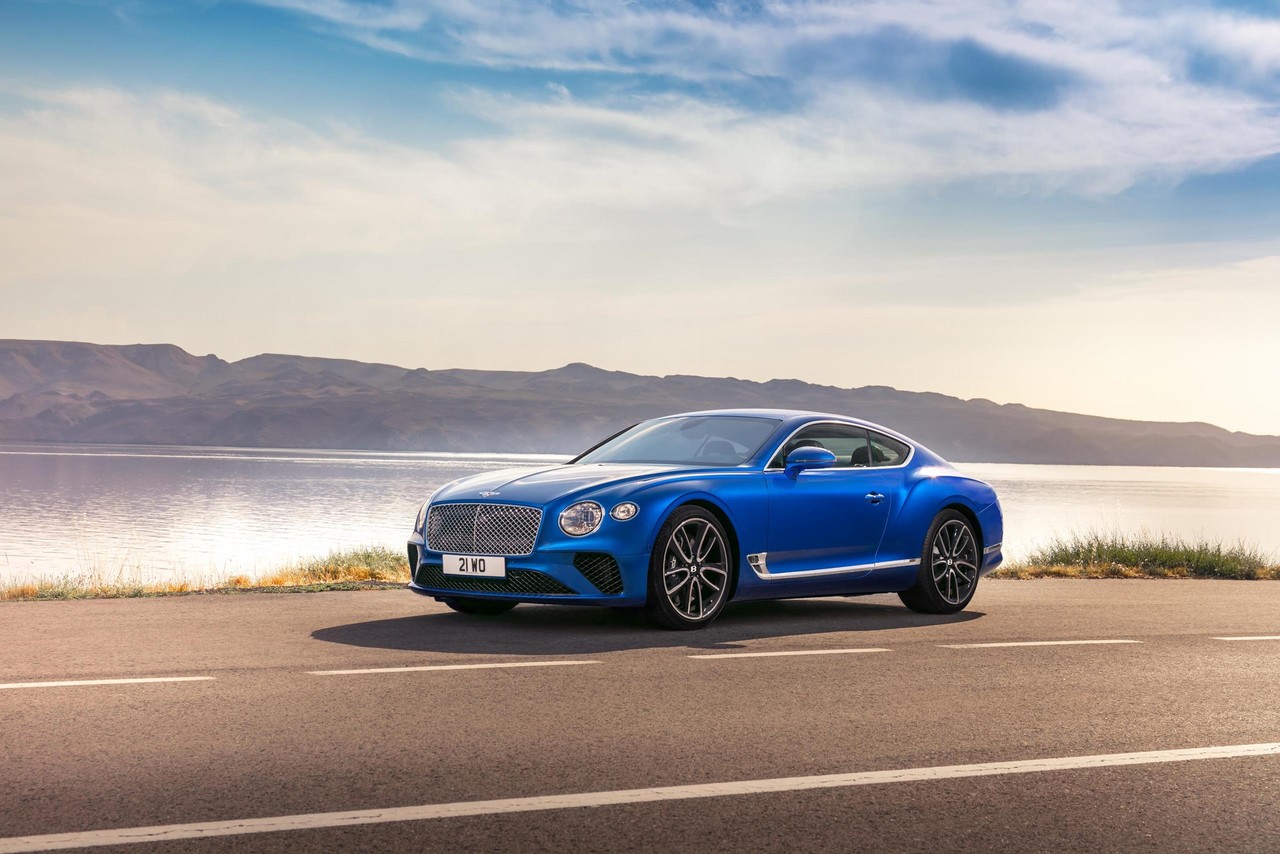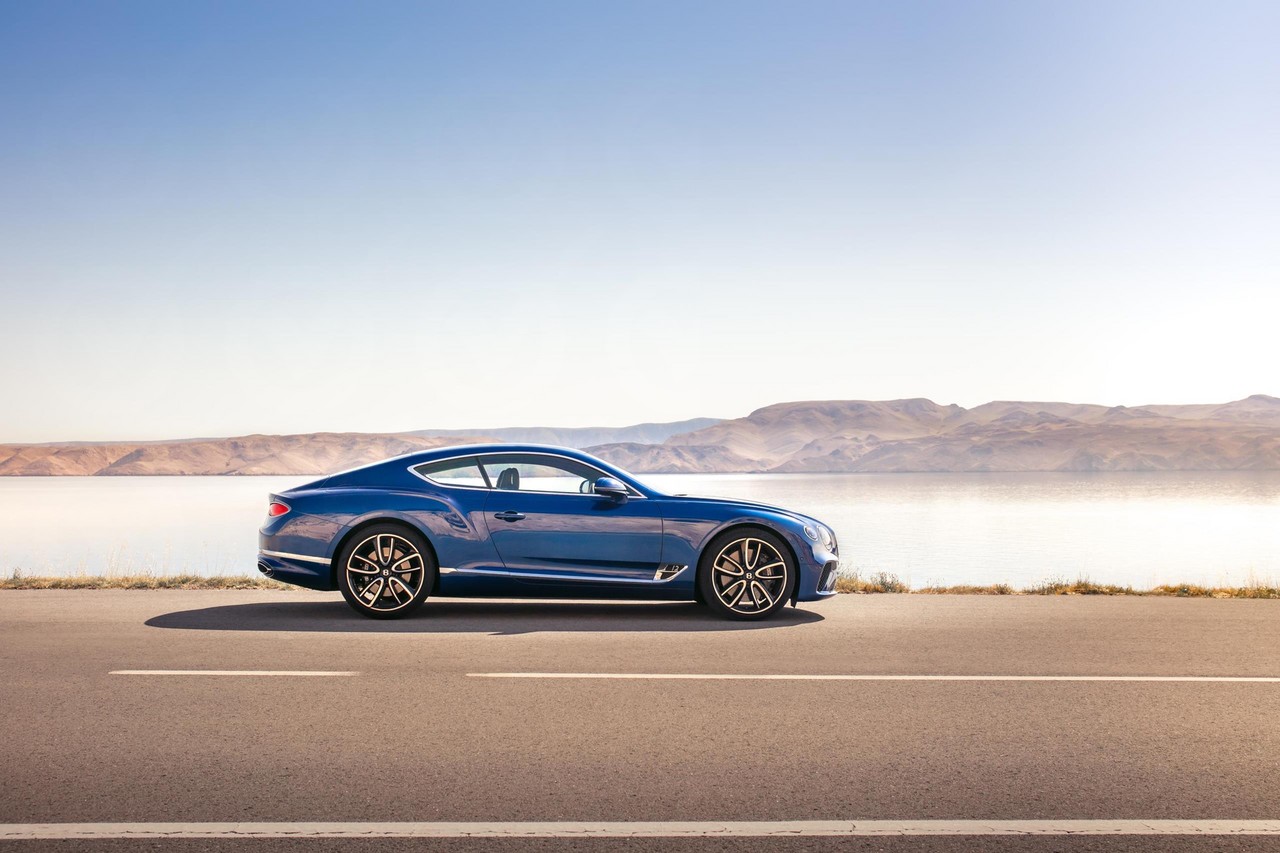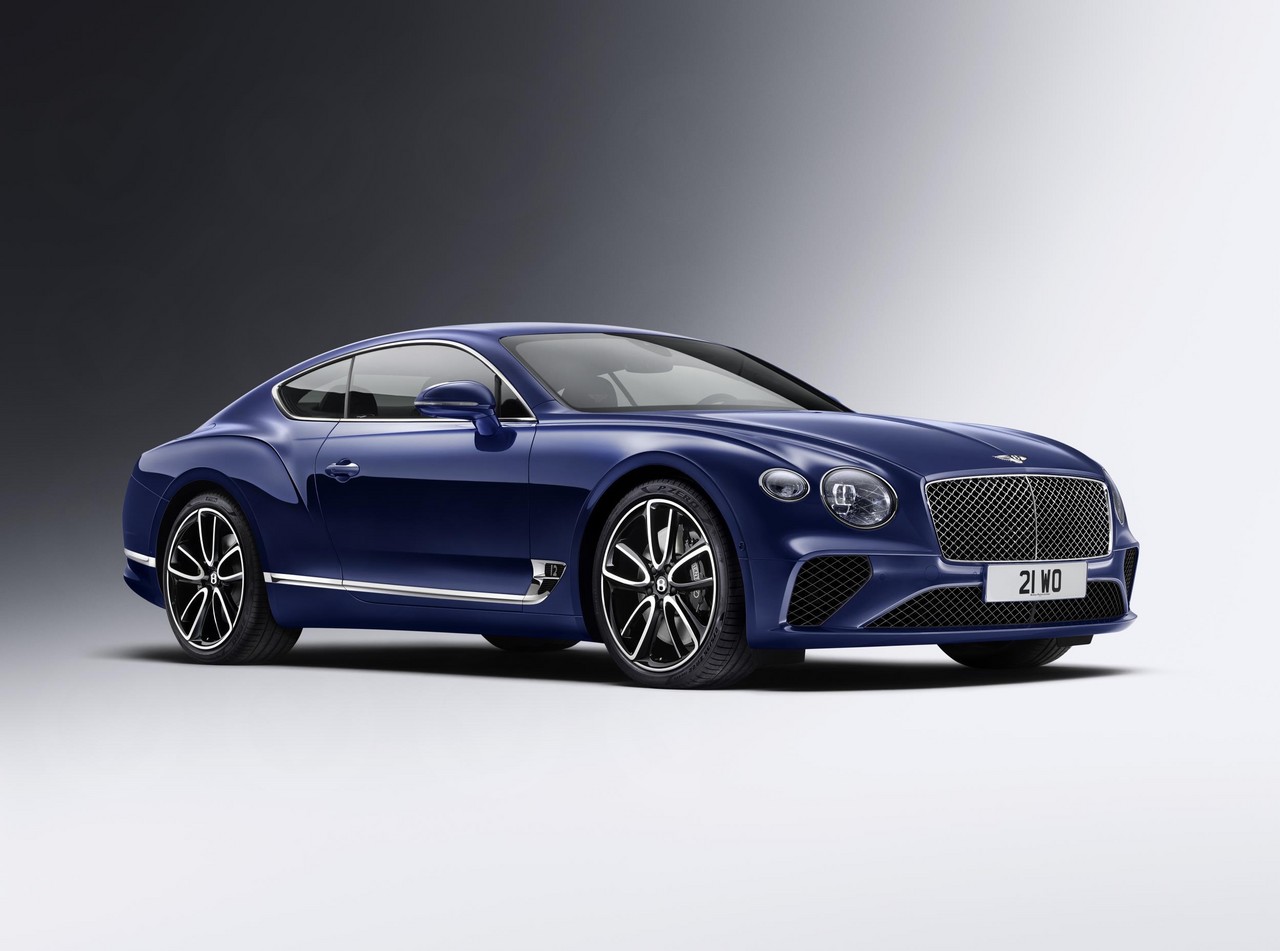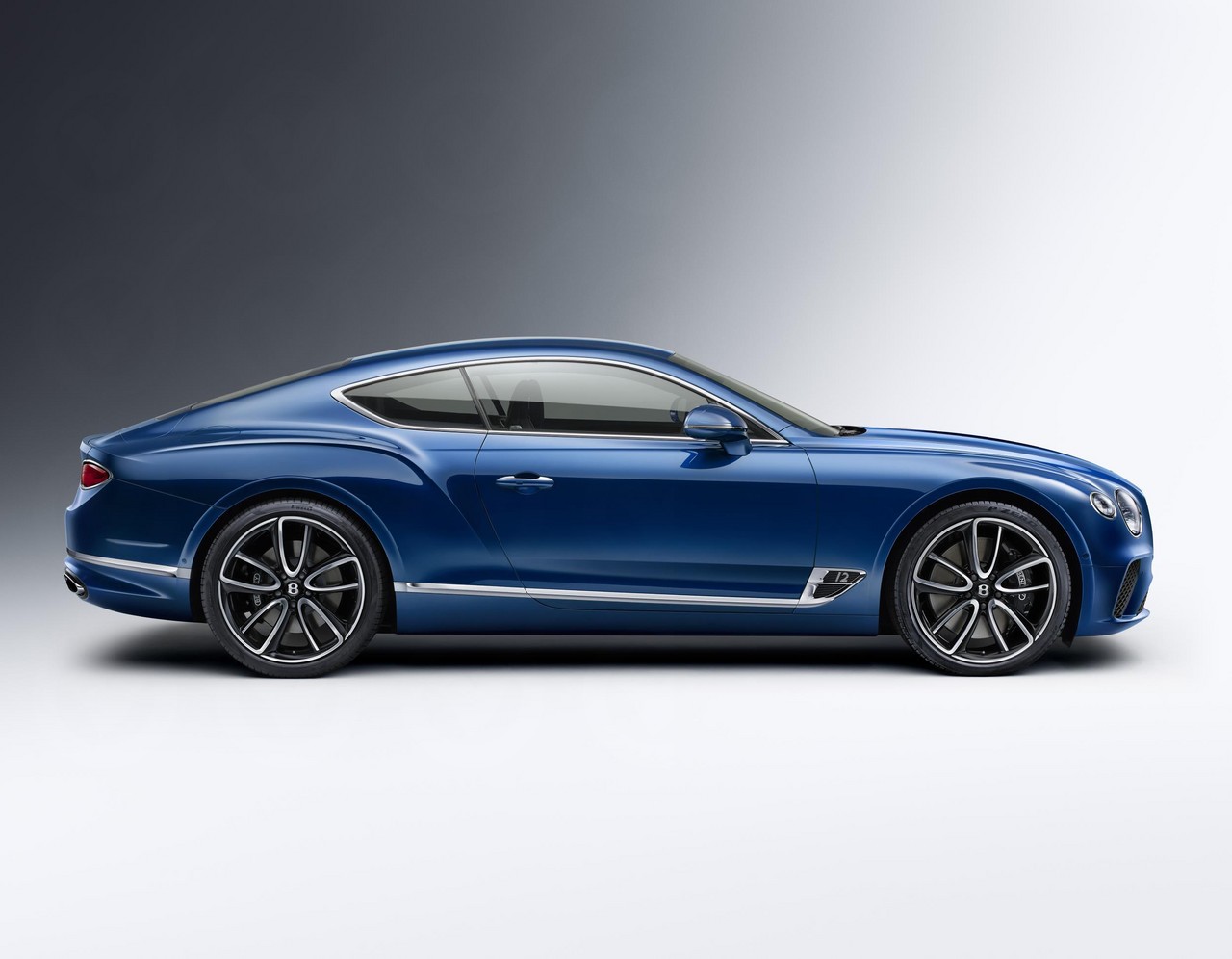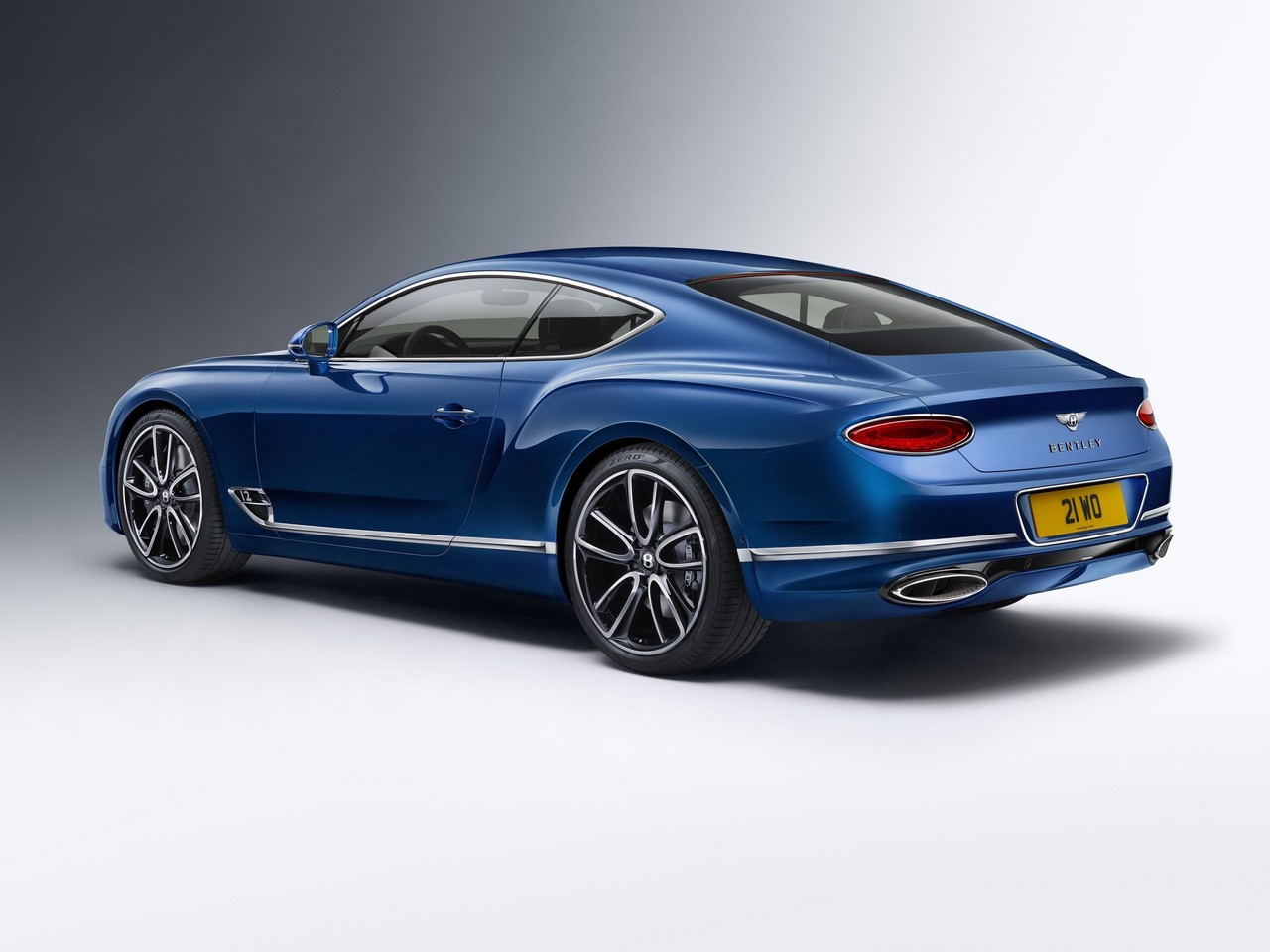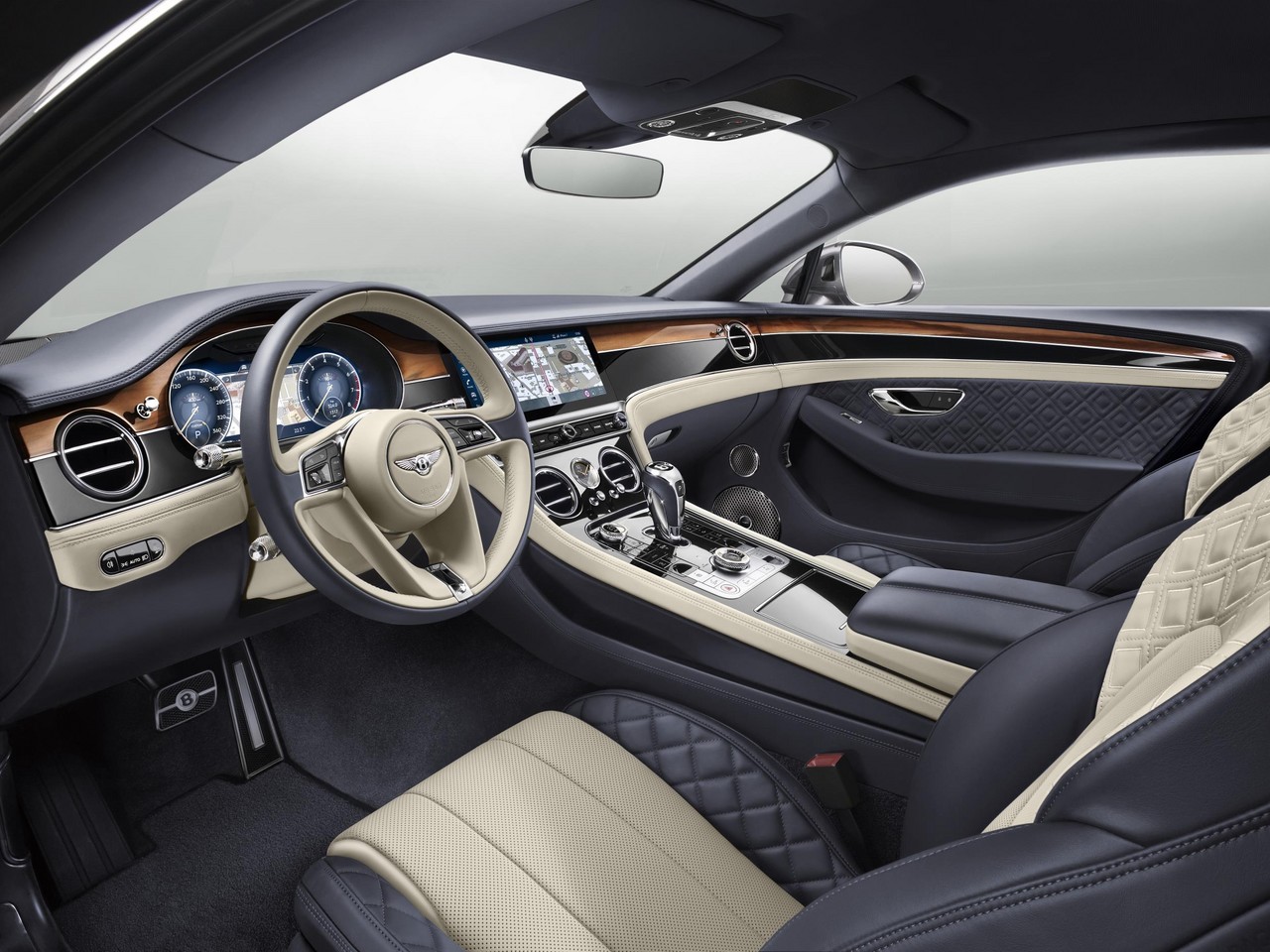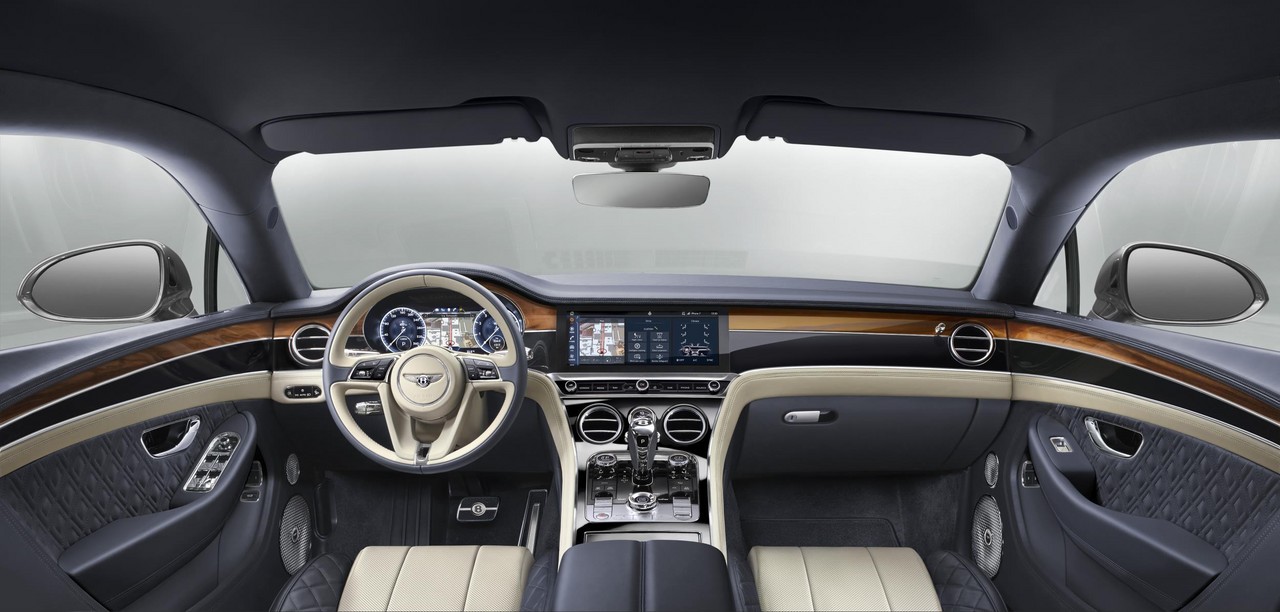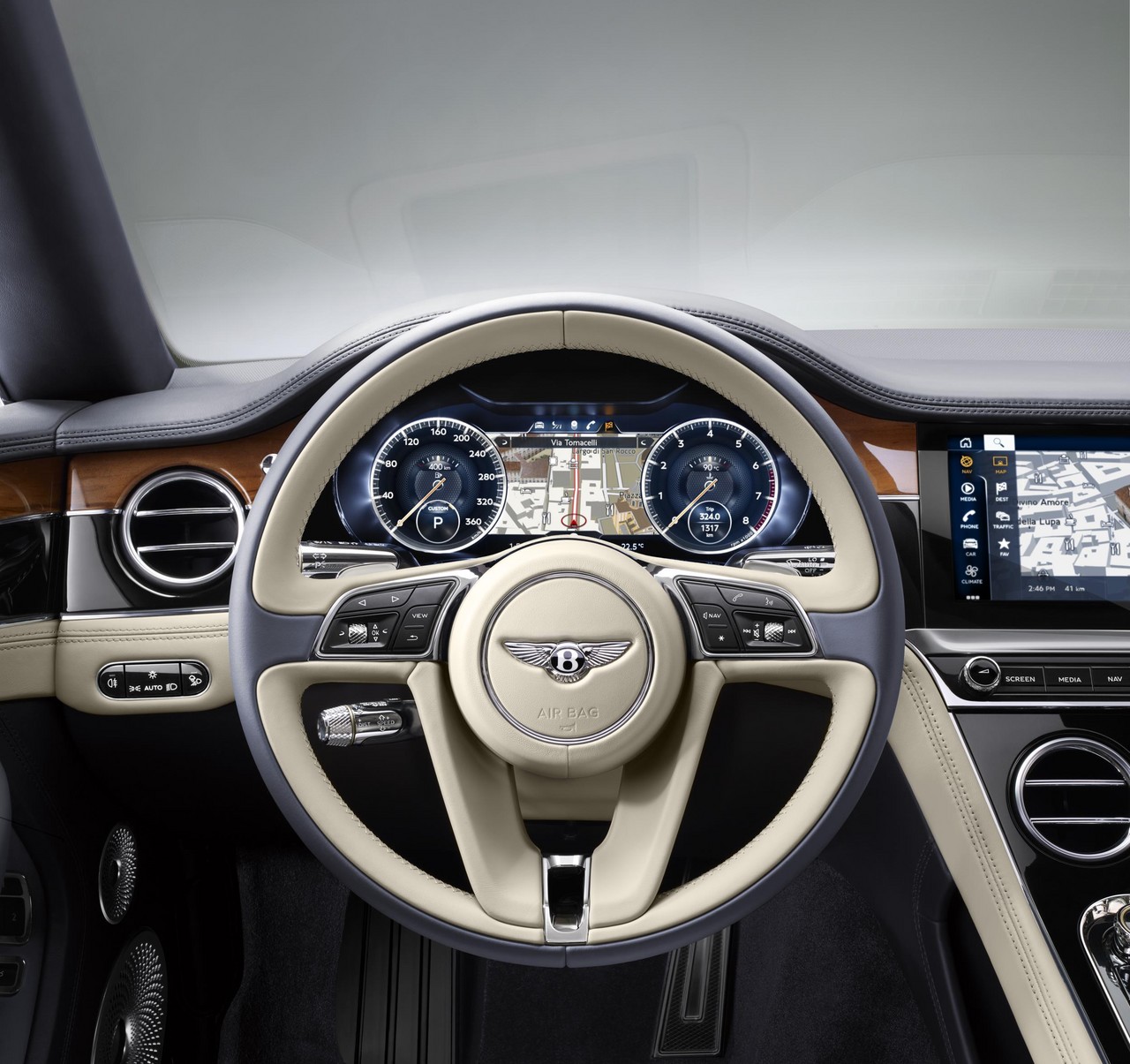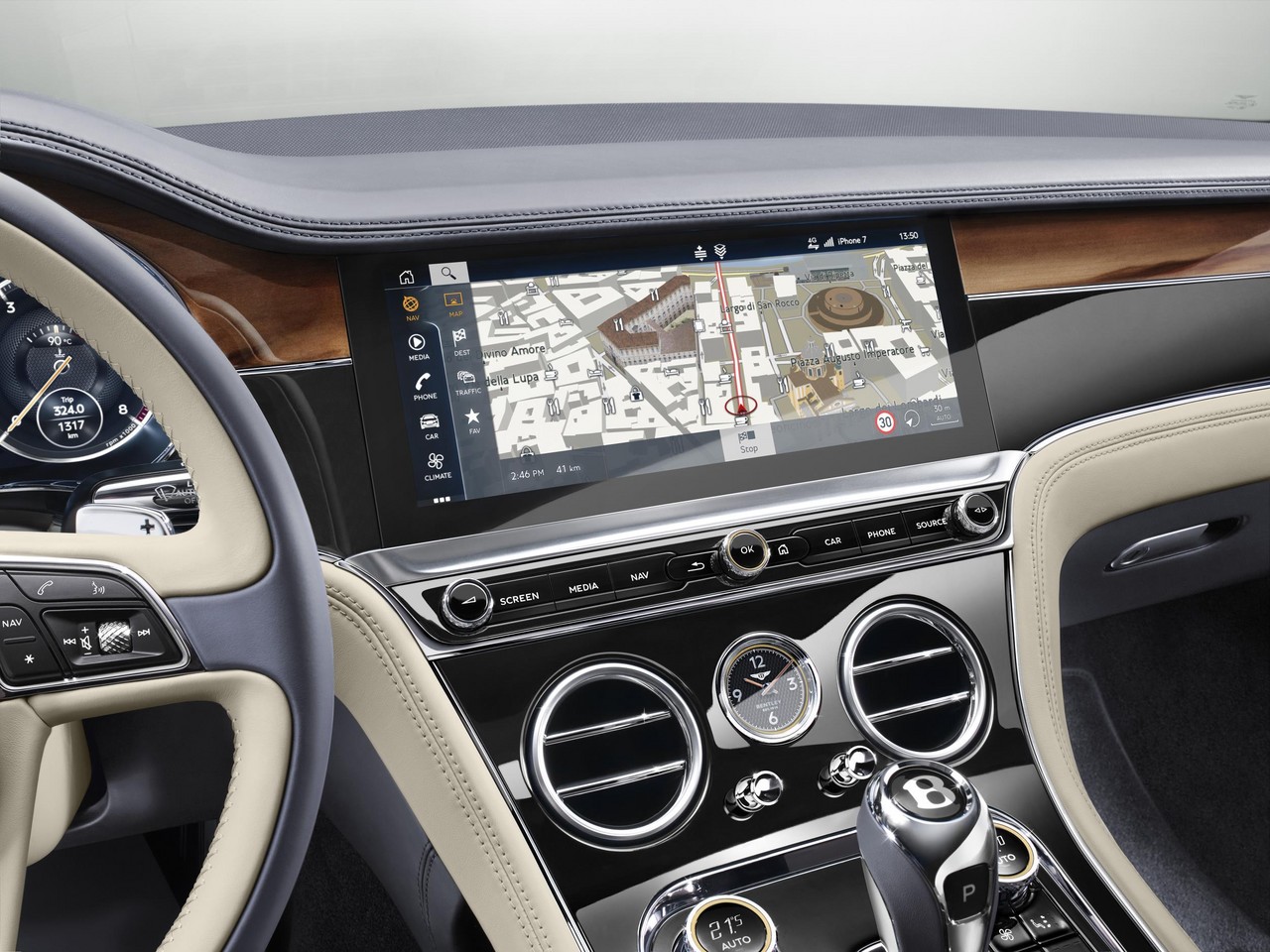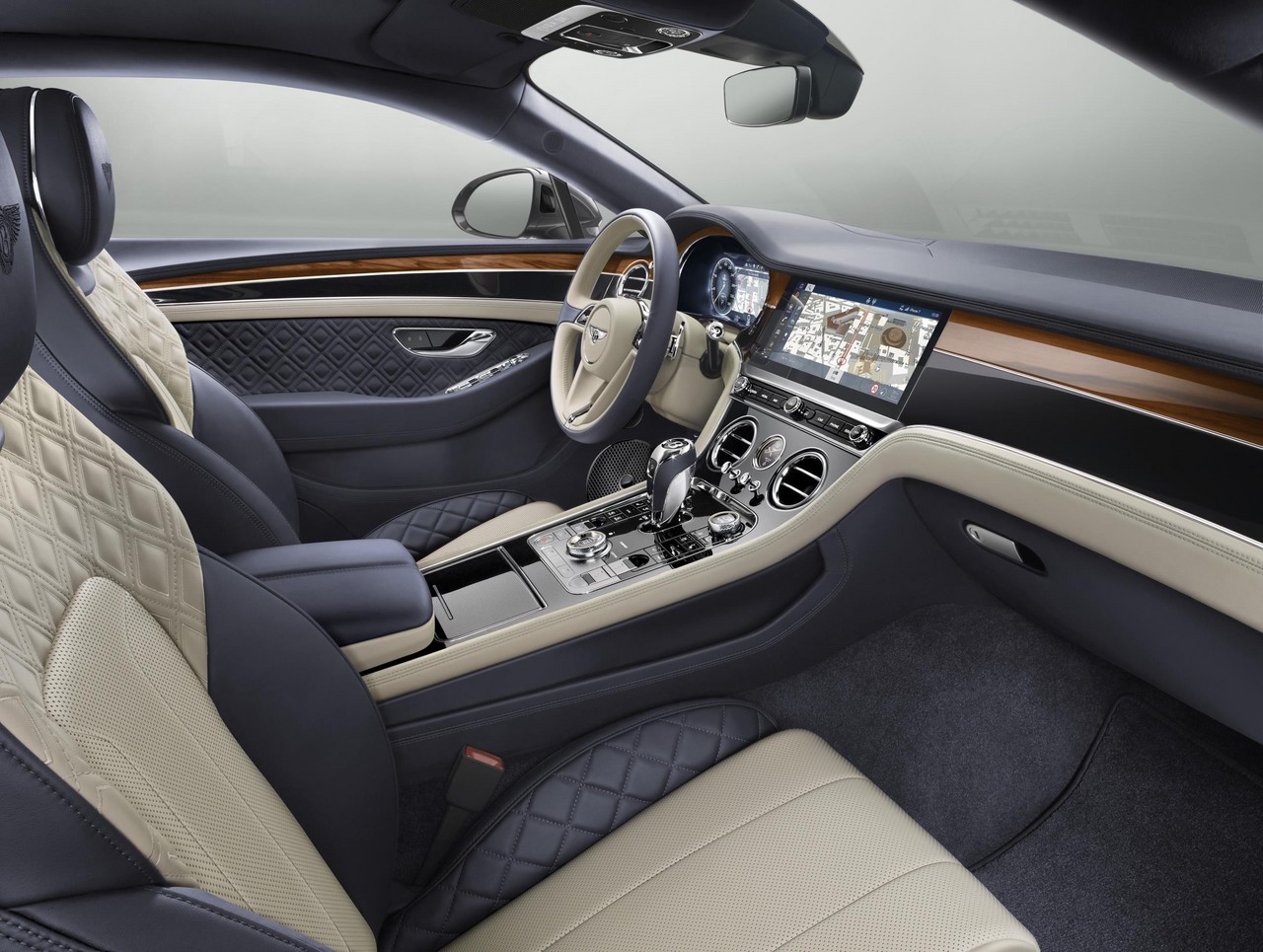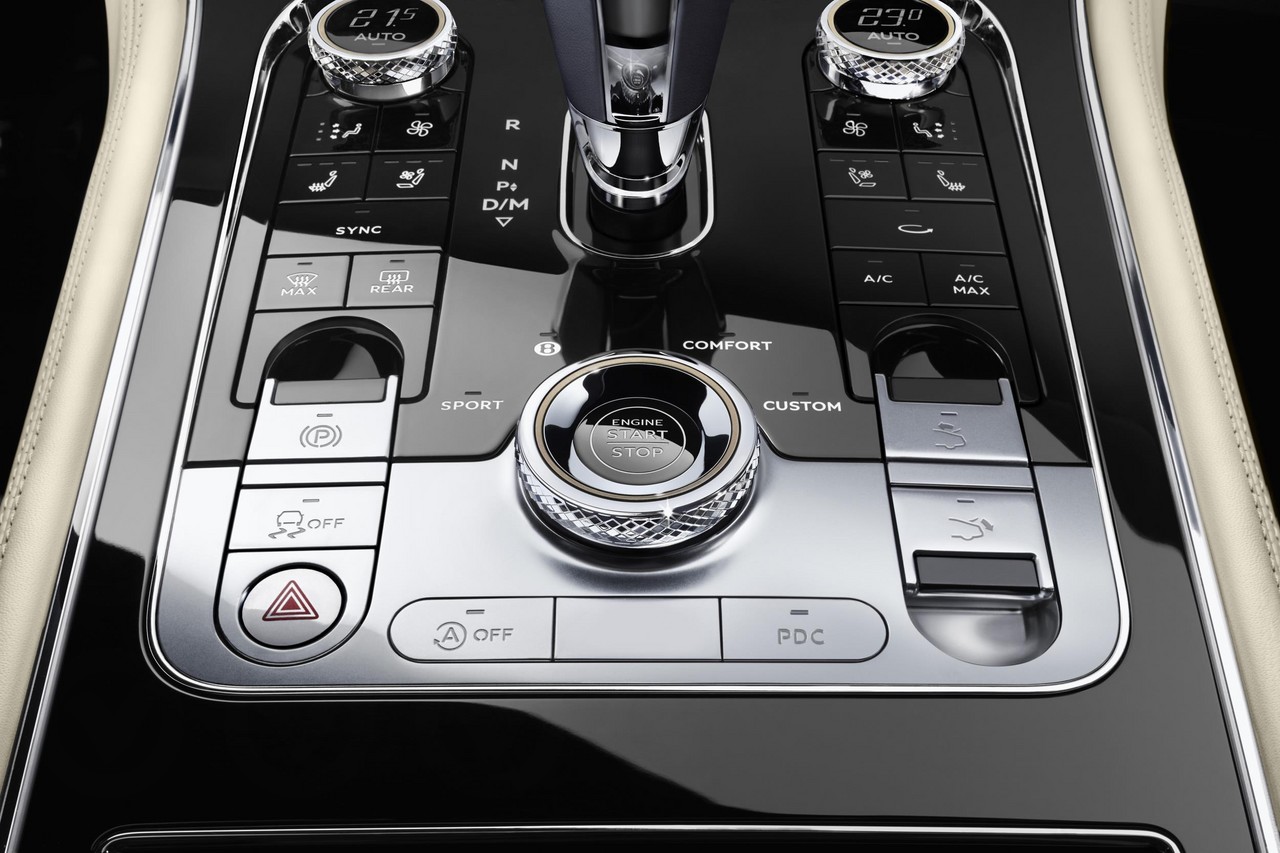
- Immense power and refinement from biturbo W12 engine
- Supremely comfortable and supportive front seats
- Impressive interior materials and finishes
- Quiet, well-insulated cabin
- All-wheel drive traction
- Rear seat headroom inadequate for adults
- For W12, engine note lacks sonorous quality of V12 rivals
- Sheer mass makes it less agile than some GT rivals
- Challenging styling
Overview
Production of the Bentley 3S Continental GT commenced in March 2018 and it was released in Australia in September 2018. Manufactured in Crewe, England, the Bentley 3S Continental GT was a two-door fastback with two-plus-two seating. Initially, the all-wheel drive Bentley 3S Continental GT was powered by a 6.0-litre biturbo W12 engine that was mated to an eight-speed double clutch transmission. However, a 4.0-litre biturbo V8 will follow in 2019.
W12 TSI engine
Shared with the Bentley Bentayga , the 5950 cc W12 petrol engine had an aluminium-alloy cylinder block with 84.0 mm bores and an 89.5 mm stroke. Furthermore, the cylinder bores were coated with a low-alloy steel using an Atmospheric Plasma Spray (APS) process to reduce friction.
Key features of the W12 engine (four banks of three-cylinders sharing a common crankshaft) included its die-forged steel crankshaft, cast aluminium alloy cylinder head, double overhead camshafts (chain driven by three simplex roller chains), four valves per cylinder, variable intake and exhaust camshaft timing, direct and injection at a pressure of up to 200 bar, multi-point port injection at a pressure of up to six bar and a compression ratio of 10.5:1. Furthermore, the W12 engine had:
- two parallel twin-scroll turbochargers that had integrated speed sensors and the turbocharger housings were welded directly to the exhaust manifolds; and,
- three separate coolant circuits.
The W12 engine was mounted on ‘active’ engine mounts which featured newly developed torque reaction struts to resist engine roll and lateral movement.
To reduce fuel consumption, the W12 engine had:
- Bentley’s ‘Variable Displacement’ system which could shut down half of the engine – i.e. the valves, fuel injection and ignition – when operating in gears 3 to 8, when engine speed was below 3000 rpm and when less than 300 Nm was required;
- A Stop-Start function which enabled the engine to shut down when the vehicle was near stationary speeds (and not just when the vehicle was stationary); and,
- A coasting function which operated in gears 5 to 8 to open the torque converter, reduce engine speed to idle and enable the car to coast without the effect of engine braking.
The W12 engine had a Bosch MG01 engine management system which used dual ECUs. According to Bentley, the hardware performed 300 million calculations per second and powertrain engineers optimised almost 50,000 individual software settings across nearly 1500 separate functions.
The Bentley Continental GT W12 could accelerate from rest to 100 km/h in 3.7 seconds and had a top speed of 333 km/h. According to Bentley, the W12 engine took six-and-a-half hours to hand-assemble from 294 individual components.
| Variant | Engine | Trans. | Peak power | Peak torque |
|---|---|---|---|---|
| W12 TSI | 5950 cc DDBD biturbo petrol W12 | 8sp DCT | 467 kW at 5000-6000 rpm | 900 Nm at 1350-4500 rpm |
Dual-clutch transmission
The Bentley Continental GT had a dual-mass flywheel which connected the W12 engine to the eight-speed double clutch transmission (DCT) to reduce torque fluctuations from the engine. The DCT varied its gearshift times according to the selected driving mode. Furthermore, the Bentley Continental GT W12’s maximum speed (333 km/h) was reached in sixth gear since the seventh and eight gears acted as overdrive gears for cruising.
All-wheel drive system
The Bentley Continental GT’s ‘Active All-Wheel-Drive system’ utilised an electronically controlled multiple-plate clutch to distribute torque between the front and rear axles in a fully variable manner. In normal conditions, the vehicle would use rear-wheel drive as much as possible for ‘optimum efficiency and dynamic performance’. Based on driving conditions and behaviour, however, the system could send drive to the front axle. If, for example, the rear wheels started to spin when accelerating, the multi-plate clutch would engage to direct more power to the front wheels. When cornering, the delivery of power to the front wheels was also monitored to provide optimum lateral stability.
Torque was managed across each axle by the torque-vectoring-by-brake system that was first introduced on the Bentley Continental GT3-R and Supersports models. By braking the inside rear wheel when cornering, yaw was generated to enhance turn-in. When accelerating out of a corner, the car would lightly brake the inside front wheel to move torque to the outer wheel and optimise traction.
Body and dimensions
The Bentley 3S Continental GT was underpinned by Volkswagen Group’s MSB platform which was shared with the Porsche 971 Panamera . Compared to the Bentley 3W2 Continental GT which it replaced, which it replaced, the third-generation Bentley Continental GT was 33 mm longer (at 4850 mm), 23 mm wider (1966 mm), 1 mm taller (1405 mm) and had a 105 mm longer wheelbase (2851 mm); boot capacity was 358 litres. Furthermore, the Bentley 3S Continental GT had –
- A longer bonnet with a lower nose;
- The front wheels were effectively positioned 135 mm further forwards; and,
- The engine was positioned closer to the cabin. As such, the Bentley 3S Continental GT had a weight distribution of 55:45 compared to 58:52 for the 3W2 Continental GT.
The Bentley 3S Continental GT had a drag co-efficient of 0.29 Cd.
The body structure of the Bentley 3S Continental GT was a combination of steel and aluminium in sheet, cast and extruded forms. The sculpted surfaces of the side body panels were achieved using Super-Plastic Forming technology; used in the aerospace industry, the Super Forming process heated aluminium to a temperature above 500 degrees Celsius, then used air pressure to push the aluminium into a mould. By using air pressure rather than a conventional two-piece mould tool, it was possible to achieve tighter radii and greater depth of form within each panel. To reduce mass, all exterior panels for the Continental GT other than the boot were made from aluminium; the boot panel, however, was moulded in a composite material to allow for the sub-surface inclusion of all vehicle antennae. According to Bentley, the use of aluminium and composited contribute to a mass reduction of 85 kg relative to a steel body (a reduction of around 20 per cent). As such, the Bentley 3W2 Continental GT W12 had an unladen mass of 2244 kg.
The unique front sub-frame for the Continental 3S GT was manufactured using a ‘Thixocasting’ process (a semi-solid metal (SSM) processing technique which involves alloy formation in a semi-solid state to near-net-shaped products). Furthermore, the front sub-frame was an integrated part of the front vehicle body structure so that it contributed to whole body torsional stiffness and the stiffness of the suspension and engine mounting points.
Suspension
The Bentley Continental 3S GT had double wishbone front suspension and multi-link rear suspension that was connected to the body via a lightweight sub-frame in a hollow aluminium casting.
The suspension for the Bentley 3S Continental GT included the following technologies –
- Continuous Damping Control (CDC): continually measured the velocity and distance between the wheels and the body at each corner and adjusted the air volume in the springs to balance comfort and handling. The air suspension had three-chamber air springs which had a 60 per cent greater air volume in their softest setting than the single-chamber springs of the 3W2 Continental GT;
- Bentley Dynamic Ride (active anti-roll bars): used a dedicated control computer to monitor wheel inputs and operate electric rotary actuators that were integrated into the front and rear anti-roll bars. In contrast to the fixed torsional resistance of conventional anti-roll bars, the variable resistance of active anti-roll bars could further reduce body roll during hard cornering yet provide a more compliant ride in other conditions. The actuators could deliver up to 1300 Nm of torque to resist roll and – due to the 48 volt electrical system which powered them – were able to achieve this peak figure in 0.3 seconds. According to Bentley, this response time made ‘pre-sensing of road conditions irrelevant’ (an indirect reference to Mercedes-Benz’s ‘Road Surface Scan’ system); and,
- Bentley Drive Dynamics Control: enabled the driver to select from Comfort, ‘Bentley’, Sport and Custom modes which varied suspension, engine, transmission and other chassis systems.
Steering
The Bentley Continental GT had rack-and-pinion steering with electric power assistance. To increase manoeuvrability, the steering had variable ratios so that less rotation was required at low speed.
Safety equipment
Standard safety equipment for the Bentley Continental GT included dual front airbags, front seat-mounted side airbags, full-length curtain airbags, ABS, electronic brake force distribution, brake assist, electronic stability control, traction control and front and outer rear seatbelts with pre-tensioners and load limiters.
In international markets, the Bentley Continental GT was available with a ‘City Specification’ pack which includes the following technologies –
- City Safeguard: could detect pedestrians, determine their intended path and compare it with the vehicle’s predicted position. If a collision was likely, a warning would be issued to the driver and the braking system would pre-conditioned for a stop;
- Rear Crossing Traffic Warning: when reversing out of a parking space, radar sensors detected crossing traffic (including bicycles) and any potential collisions were assessed. If anticipated, the driver would receive visual and audible warnings;
- Traffic Sign Recognition: detected and interpreted traffic signs and displayed this information to the driver in the instrument panel and the head-up display;
- Top View: from the images provided by four cameras, an overall picture of the vehicle’s surroundings was created as a virtual top-down view that was displayed on the central screen. Any obstacles in the immediate area would also be shown; and,
- Park Assist: could detect suitable parking spaces and provide autonomous steering for parking manoeuvres while the driver controlled vehicle speed.
Beyond this, a ‘Touring Specification’ pack included the following –
- Adaptive Cruise Control, including stop & go, Predictive ACC and Traffic Assist: operating at speeds from rest to 250 km/h, these functions could maintain a set distance to the vehicle ahead and provided autonomous acceleration and deceleration. Predictive ACC used data from the satellite navigation system, sensors and cameras to anticipate upcoming corners, town entrances and speed-limit changes and adjusted vehicle speed accordingly. Furthermore, the Traffic Assist system monitored the position of queuing vehicles and initiated small steering inputs to keep the vehicle in line when road markings could not be detected;
- Bentley Safeguard Plus: scanned the road ahead, recognised possible frontal collisions and, if detected, would alert the driver. Bentley Safeguard Plus could automatically apply the brakes to prevent collisions at low speeds or reduce the severity of collisions at higher speeds;
- Lane Assist: used a video camera to scan the road ahead and then applied small steering inputs to assist the driver in keeping the vehicle within its lane;
- Night Vision: used an infra-red camera to display an image of the road ahead on the central Driver Information Panel, thereby extending visibility beyond the range of the headlights. Pedestrians, cyclists and large animals would be identified and highlighted when in proximity, while a warning would also be provided if they were in the vehicle’s path; and,
- Head Up Display: projected warnings and vehicle information – including speed and navigation instructions – into the driver’s direct field of view.
Wheels, tyres and brakes
The Bentley Continental GT was fitted with 21-inch wheels as standard, though 22-inch forged wheels were also available. The Continental GT was fitted with Pirelli P Zero tyres which featured Pirelli’s ‘Noise Cancelling System’ to reduce road noise.
The Bentley Continental GT W12 had 420 mm by 40 mm ventilated front brake discs which had two-piece construction (i.e. a cast-iron friction ring and an aluminium mounting bell) and each of the front brake callipers had ten pistons. The 380 mm by 30 mm ventilated rear discs had single-piece construction and were fitted with four-piston callipers.
Features: Bentley Continental GT
Inside, the Bentley Continental GT featured a 12.3-inch touchscreen that was housed in a three-sided unit in the dashboard which could rotate to display either the touchscreen, a veneer or three analogue dials. The central touchscreen provided HDD navigation and the infotainment system for the Continental GT included a 650 watt sound system with ten speakers, a digital radio tuner, a CD/DVD player, a 60GB solid-state hard drive, 4G telephone system, two SD card slots, Bluetooth and WiFi streaming, Apple CarPlay and Sirius satellite radio. Furthermore, the Continental GT had a fully digital instrument panel.
For the interior of the Bentley Continental GT:
- Over ten square metres of wood were used in each Continental GT and it took nine hours to create and fit the wooden inlays by hand. The Continental GT was available with eight different hand-crafted veneers and four dual-veneer options;
- Each interior was crafted from nine Northern European bull hides that were stitched together with 2.8 kilometres of thread. The Continental GT was available with fifteen choices of interior trim hide; and,
- To reduce interior noise, laminated acoustic glass was used for the windscreen and side windows to achieve a nine decibel reduction in exterior noise ingress relative to its predecessor at the 3.15 kHz audio frequency.
The standard seats for the Bentley Continental GT had 12 ways of adjustment, while the optional ‘enhanced’ seats had 20 ways of adjustment. Furthermore, the centre panels of the front seats had cooling, heating and massage functions. The Bentley Continental GT could also be specified with two extra-cost audio systems –
- Bang Olufsen: sixteen speakers with a 14-channel 1500 watt amplifier, four digital sound processing (DSP) modes and the first automatic application of the Beo Sonic control interface; and,
- Naim: eighteen speakers with a 2200 watt 21-channel amplifier, Active Bass Transducers that are built into the front seats and eight DSP sound modes.
The Bentley Continental GT has LED Matrix headlights which consisted of 84 individual diodes. By using a forward-facing camera to detect the surrounding environment and oncoming traffic, the individual LEDs could be de-activated to optimise the beam pattern and prevent dazzling other road users.
Mulliner Driving Specification
For the Bentley Continental GT, the optional Mulliner Driving Specification features ‘diamond in diamond’ seat quilting, embroidered Bentley emblems, additional veneer options, a jewelled-finish fuel filler, sports pedals and an indented leather headliner. The Mulliner Driving Specification also included 22-inch forged alloy wheels and enables customers to personalise stitching and treadplates.
Specifications
